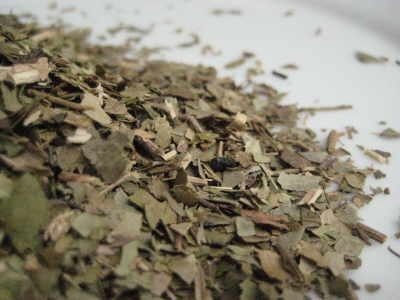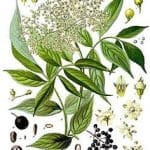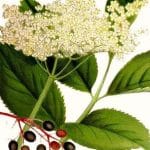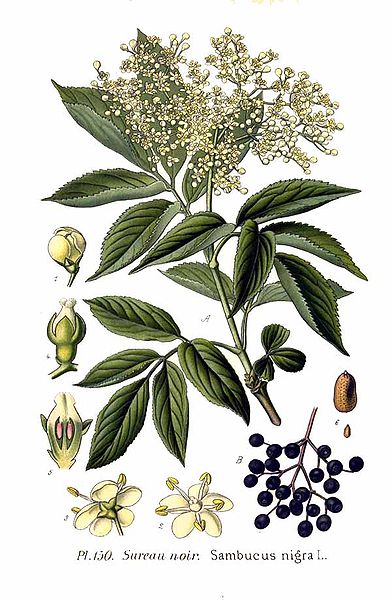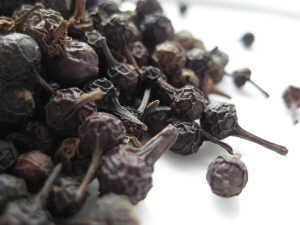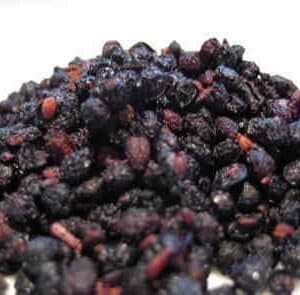The Elder (Sambucus nigra) is a genus of between 5-30 species of fast-growing shrubs or small trees (two species herbaceous), formerly treated in the honeysuckle family Caprifoliaceae, but now shown by genetic evidence to be correctly classified in the moschatel family Adoxaceae.
The genus is native to temperate and subtropical regions of both the Northern Hemisphere and the Southern Hemisphere; the genus is more widespread in the Northern Hemisphere, with Southern Hemisphere occurrence restricted to parts of Australasia and South America.
Medical Uses for Elder Leaves:-
Elder leaves appear in early spring and are best harvested in April before the flowers appear but can be harvested up until autumn if required. Usually not taken internally as a result of the green parts of the plant being mildly poisonous, containing cyanogenic glycosides including sambunigrin but an infused or macerated oil made with the leaves is of considerable use in ointments for bruising, sore muscles and chilblains. When applied topically, they appear to break down bruises and work as an anodyne or relaxant to relieve pain. If using them to make an infused oil, pick the leaves on a dry and sunny day as excess moisture in the leaves can turn the oil rancid quickly which is why dried leaves ( this product ) is a popular alternative.
Traditional Uses for Elder :-
Both Elder Flower and Elder Berry can be made into Elder wine, and in Hungary an Elder brandy is produced (requiring 50 kg of fruit to produce 1 litre of brandy). The alcoholic drink Sambuca is made by infusing Elder Berry and anise into alcohol. The berries are best not eaten raw as they are mildly poisonous, causing vomiting (particularly if eaten unripe). The mild cyanide toxicity is destroyed by cooking. The berries can also be made into jam, pies or Pontack sauce.
All green parts of the plant are mildly poisonous, containing cyanogenic glycosides (Vedel & Lange1960) but cooking tends to destroy the toxins.
In Europe, Elder Berry can be made into a syrup or cordial (in Romanian: Socat), which is diluted with water before drinking. It is more usual to do this with the flower, however. The popularity of this traditional drink has recently encouraged some commercial soft drink producers to introduce Elder Flower and Elder Berry-flavoured drinks.
| Country of Origin | USA |
|---|---|
| Batch Code | JF 556854 |
| Harvest | Sep 23 |
| Best Before | Oct 25 |
